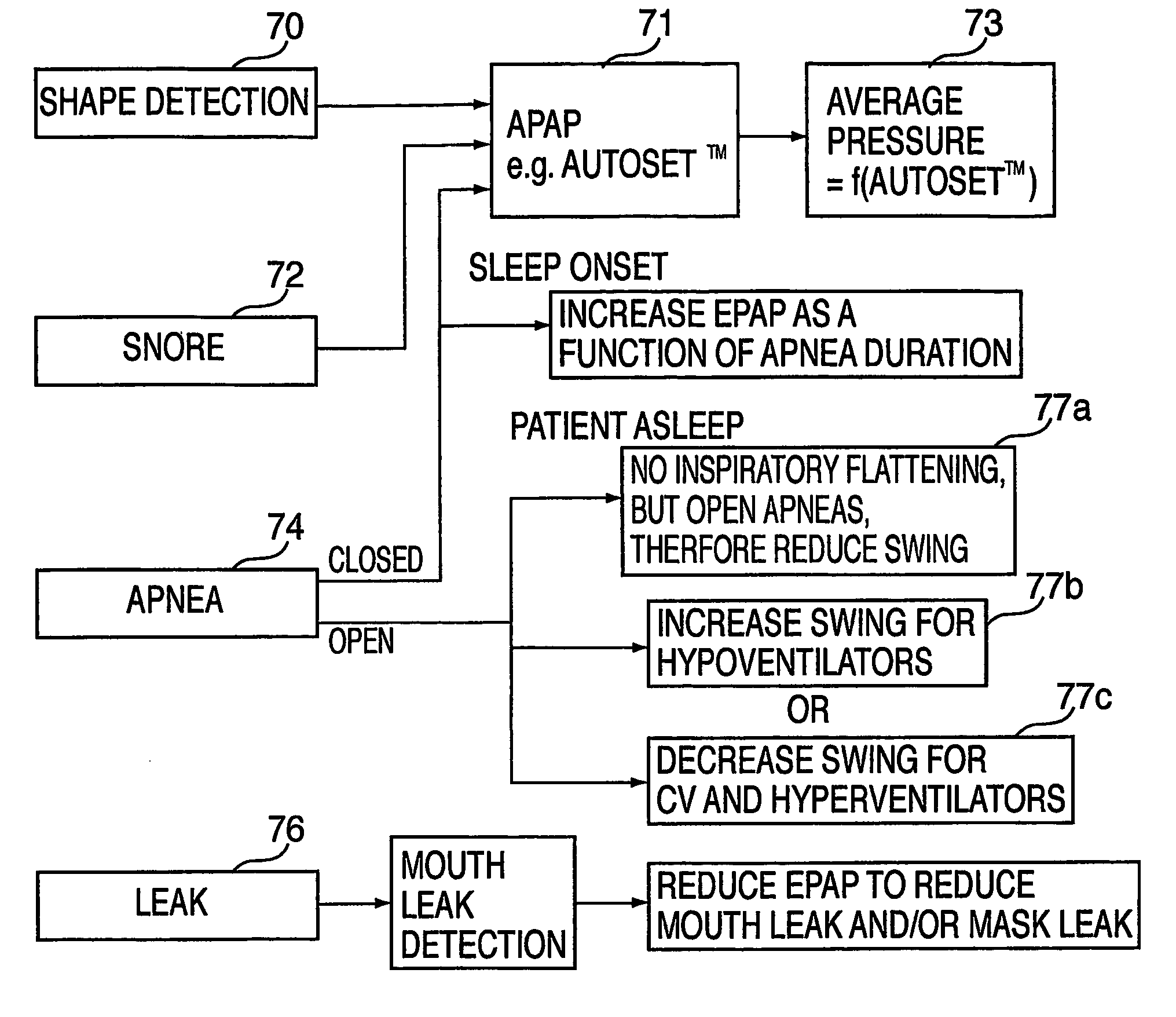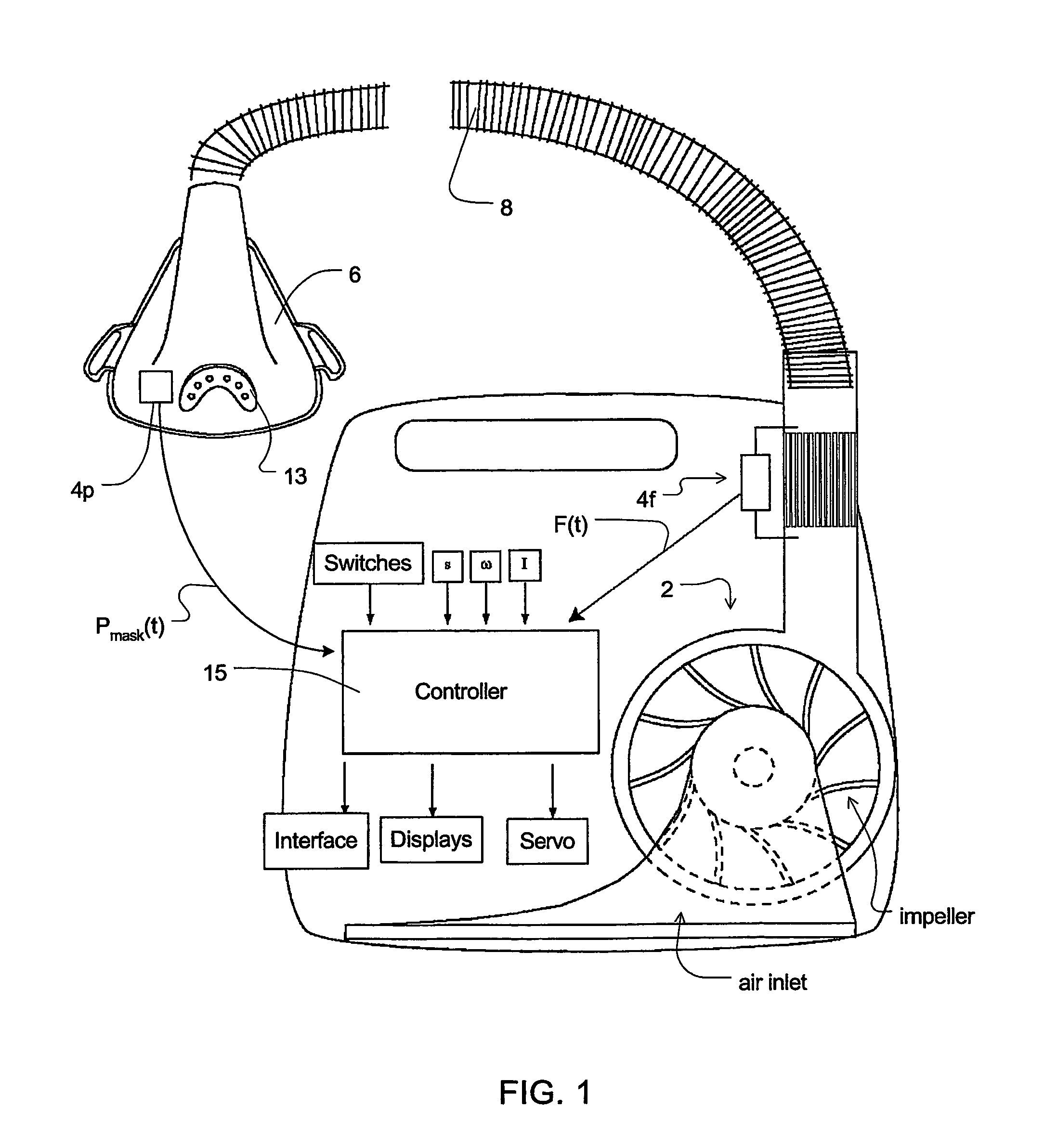Mechanical ventilation in the presence of sleep disordered breathing
a technology of mechanical ventilation and sleep disorder, which is applied in the direction of respirator, operating means/releasing devices, diagnostic recording/measuring, etc., can solve the problems of non-compliance with therapy, uncomfortable patients, and uncomfortable above devices
- Summary
- Abstract
- Description
- Claims
- Application Information
AI Technical Summary
Benefits of technology
Problems solved by technology
Method used
Image
Examples
first embodiment
5.5.1 Automatic IPAP
[0054]In accordance with a first embodiment of the invention, a device is adapted to provide a generally square waveform having settings for IPAP and EPAP in a manner similar to ResMed's VPAP III device. The device has a clinician-settable pressure setting for the difference between IPAP and EPAP, ΔP (sometimes called Swing). The device monitors patient flow and determines a treatment pressure using the same algorithm as ResMed's AUTOSET SPIRIT device. See U.S. Pat. No. 5,704,345. Upon detection of the beginning of inspiration, as described above, the device provides a supply of air at the treatment pressure (IPAP=treatment pressure) and maintains that pressure throughout the inspiratory portion of the patients breathing cycle. Upon detection of the beginning of exhalation, the device decreases the supplied pressure to the treatment pressure less ΔP.
[0055]In this way the advantages of the automatically adjusting CPAP algorithm are brought to a bi-level CPAP devi...
fourth embodiment
5.5.4 Automatic Swing Control
[0058]In accordance with another aspect of the invention, the therapeutic treatment pressure is used to control the pressure difference between IPAP and EPAP, or the “swing”. For example, when the device determines that the treatment pressure is small, e.g., 5 cmH2O, then the swing is set to a small value, e.g., 0 or 1 cmH2O, and when the treatment pressure is large, e.g., 15 cmH2O, the swing is set to a larger value, e.g., 3 or 4 cmH2O. In this way a device in accordance with the invention can be controlled to ensure that pressure never drops below a threshold, for example, 4 or 5 cmH2O. Such a form of control is illustrated by the function of FIG. 8A in which the swing is set as a function of detected therapeutic treatment pressure (APAP Treatment Pressure). An alternative function is illustrated in FIG. 8B in which the swing is restricted from falling below a minimum such as 1 cmH2O.
[0059]As illustrated in FIG. 7, if an event of central apnea is dete...
PUM
 Login to View More
Login to View More Abstract
Description
Claims
Application Information
 Login to View More
Login to View More - R&D
- Intellectual Property
- Life Sciences
- Materials
- Tech Scout
- Unparalleled Data Quality
- Higher Quality Content
- 60% Fewer Hallucinations
Browse by: Latest US Patents, China's latest patents, Technical Efficacy Thesaurus, Application Domain, Technology Topic, Popular Technical Reports.
© 2025 PatSnap. All rights reserved.Legal|Privacy policy|Modern Slavery Act Transparency Statement|Sitemap|About US| Contact US: help@patsnap.com



